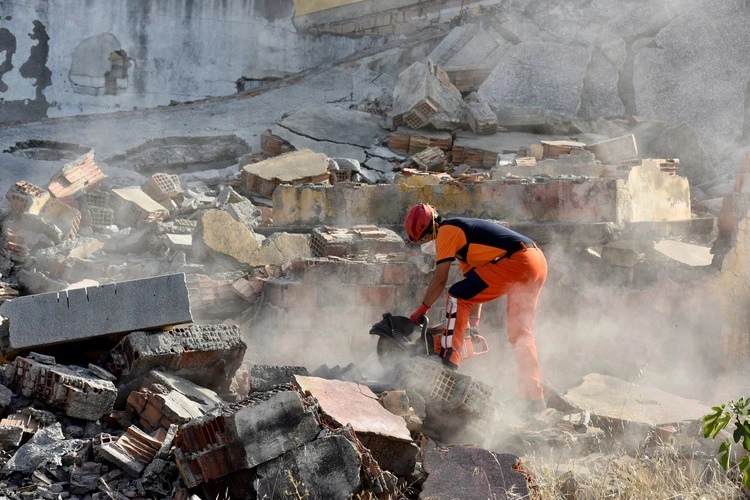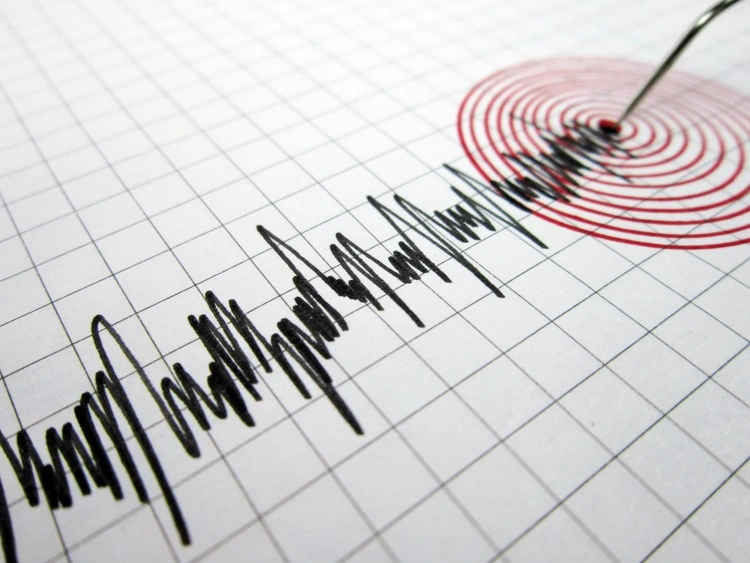
Discover more about aftershocks, their formation & the devastating impacts they leave on communities already reeling from major quakes
By
Earlier today, a powerful 7.1-magnitude earthquake struck Tibet’s Shigatse city, killing at least 95 people, injuring 130 and damaging more than 1,000 houses. Its epicentre, located in Tingri county, was around 50 miles (80km) north of Mount Everest, with tremors from the quake felt in Nepal, Bhutan and Northern India.
After the major earthquake, more than 150 aftershocks – with magnitudes of up to 4.4 – were recorded in the surrounding townships and villages.
Although typically lower in magnitude and intensity than a main earthquake, aftershocks can still be just as devastating. But how do they occur – and what impacts do they have?
What are aftershocks and how are they caused?
After a large earthquake event like that in Tibet – also known as a ‘mainshock’ – smaller earthquakes (aftershocks) can hit the nearby area of the initial impact as part of the normal readjustment process of the Earth’s crust.
When an earthquake occurs, energy is released from fracturing rocks and transferred to nearby rocks in the ground. When this transferred energy and the resulting stress becomes too great, these rocks then fracture, causing new faults and releasing energy again, resulting in an aftershock.
Enjoying this article? Check out our related reads:
These smaller tremors are considered aftershocks if they fulfil one of the following: either being within the fault surrounding the earthquake, or occurring outside the fault within one full fault length (the length of a fault end-to-end).
Typically, the largest aftershock will be around one magnitude level below that of the main earthquake, and there can be anywhere from several a day to only a handful in one week. A large earthquake may have thousands of aftershocks.
An aftershock is different from a swarm, which is defined as a series of mostly small quakes in a short period of time, lacking a single large earthquake.
Aftershocks for centuries
Currently, seismologists are unable to predict when aftershocks might occur, but it is understood that they are at their most damaging in the hours and days following an earthquake.
However, recent research by US scientists has shown that aftershocks may still occur far beyond when the initial main quake struck – even centuries later.
According to their research, nearly a third of modern earthquakes in the New Madrid seismic zone – covering parts of Missouri, Arkansas, Tennessee, Kentucky and Illinois – were most likely aftershocks from a trio of quakes that hit the region between 1811 and 1812.

Similarly, 72 per cent of present-day earthquakes in South Carolina were thought to be aftershocks following an 1886 earthquake in the city of Charleston in the state. To deduce this, scientists looked at modern earthquakes within a 55-mile radius (250 kilometres) of the centuries-old quakes to see if they hit close enough to the historic quake epicentres. If they did, they could be considered as aftershocks.
Catastrophic consequences
While main earthquakes have sizeable impacts and threaten human life, aftershocks can be just as damaging – and even more so than their larger counterparts in some cases. But what makes them so dangerous?
One reason is due to the ability of aftershocks to further damage weakening buildings to the point of total collapse, with no time in between the main earthquake and subsequent aftershocks to stabilise structures.
If a building was moderately damaged during a main quake, a strong aftershock could drum up enough energy to entirely destroy it, potentially endangering the lives of first responders and rescue teams inside.
One such example is the 1976 7.8-magnitude Tangshan earthquake in China, which led to the collapsing of entire houses and damage to railway lines on a local bridge. And in 2010, the aftershocks of New Zealand’s 7.1-magnitude Canterbury earthquake caused extensive building damage and 146 deaths, highlighting just how dangerous these aftershocks can be.
Aftershocks have also been known to cause significantly more economic damage than main quakes. A 6.2-magnitude aftershock almost six months after New Zealand’s 2010 earthquake caused more than double the damage than the original quake: 15 billion USD compared to 6 billion USD. This is because the aftershock’s location in Christchurch’s metropolitan area was far more deadly than the main quake’s epicentre in a relatively rural area.
Another knock-on effect of aftershocks is landslides, especially in regions that have experienced heavy rainfall and flooding either prior or during quakes. This is because initial earthquakes can destabilise and loosen soil, causing cracking in bedrock – further exacerbated by continual and repeated aftershocks. Even months, or years, after a major earthquake, landslides and rockfall may continue to occur, with cracks in soil hospitable for water (which gets deep into the bedrock and soil) that in turn promotes a downwards motion of material.
In 2016, New Zealand’s Kaikōura 7.8-magnitude earthquake along with its subsequent aftershocks were estimated to have triggered between 80,000 and 100,000 landslides.




